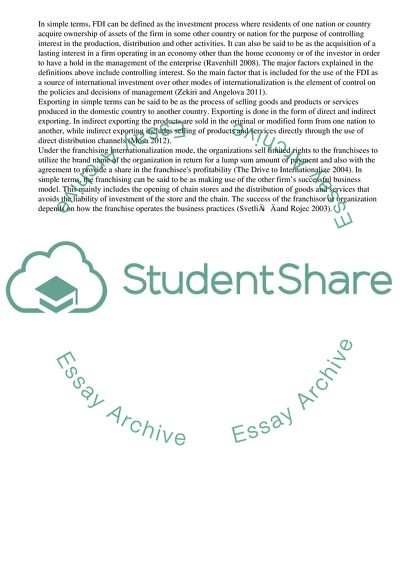Cite this document
(“FDI Mode of Internationalization Essay Example | Topics and Well Written Essays - 2000 words”, n.d.)
Retrieved from https://studentshare.org/business/1453635-discuss-the-circumstances-in-which-firms-are
Retrieved from https://studentshare.org/business/1453635-discuss-the-circumstances-in-which-firms-are
(FDI Mode of Internationalization Essay Example | Topics and Well Written Essays - 2000 Words)
https://studentshare.org/business/1453635-discuss-the-circumstances-in-which-firms-are.
https://studentshare.org/business/1453635-discuss-the-circumstances-in-which-firms-are.
“FDI Mode of Internationalization Essay Example | Topics and Well Written Essays - 2000 Words”, n.d. https://studentshare.org/business/1453635-discuss-the-circumstances-in-which-firms-are.


